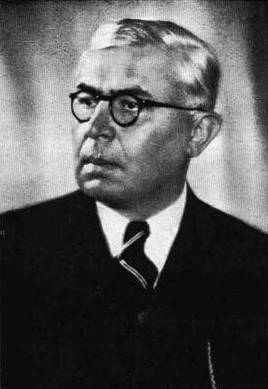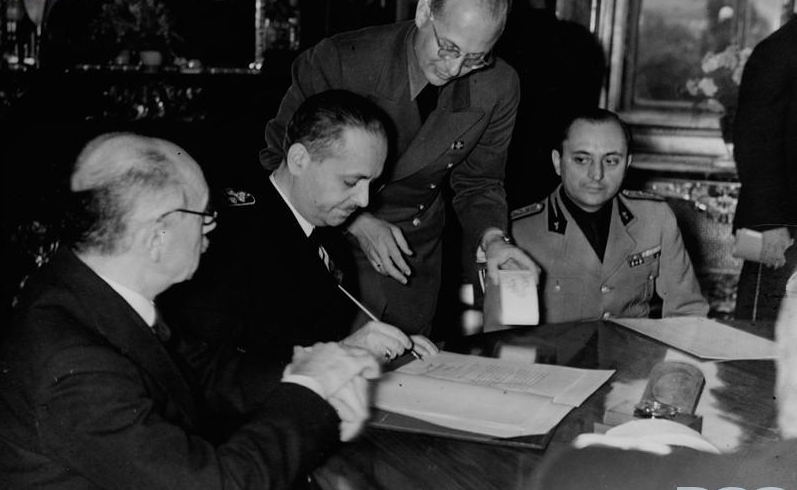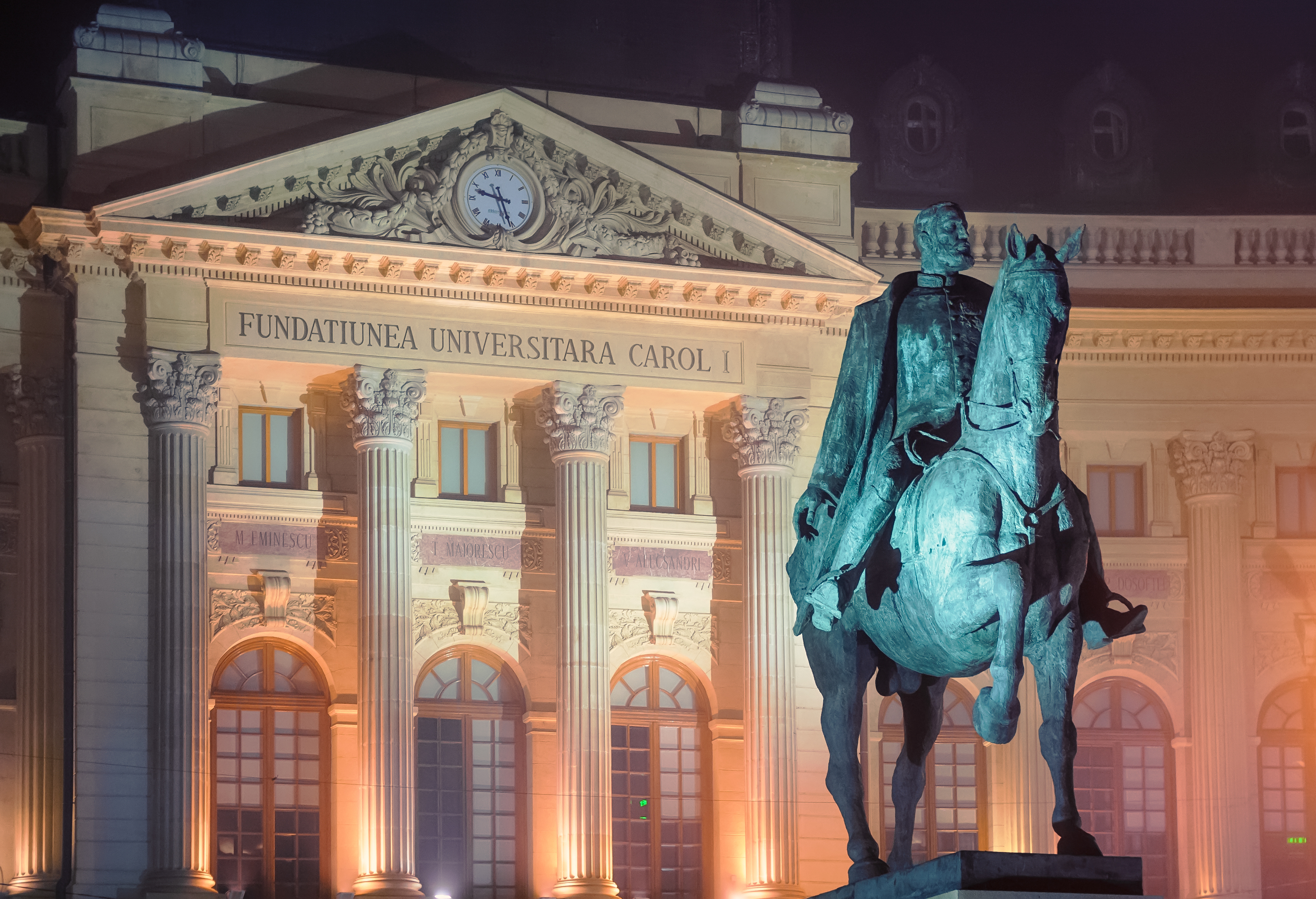|
West University Of Timișoara
The West University of Timișoara (; abbreviated UVT) is a public higher education institution located in Timișoara. Classified by the Ministry of National Education as a university of education and scientific research, UVT is one of the nine members of the Universitaria Consortium (the group of Romanian elite universities). Also, the West University is a component institution of the National Research–Development–Innovation System in its capacity as an accredited higher education institution. The university was founded by the ''Decree-Law no. 660'' issued on 30 December 1944, which stipulates that a university must be created in western Romania. Its first faculties either were dissolved or became independent institutions. These independent higher education institutions became a sole university at the end of September 1962. In 1968 the institution became an independent university. A difficult period followed, especially for the humanities and the exact sciences. Fields of st ... [...More Info...] [...Related Items...] OR: [Wikipedia] [Google] [Baidu] |
Public University
A public university, state university, or public college is a university or college that is State ownership, owned by the state or receives significant funding from a government. Whether a national university is considered public varies from one country (or region) to another, largely depending on the specific education landscape. In contrast a private university is usually owned and operated by a private corporation (not-for-profit or for profit). Both types are often regulated, but to varying degrees, by the government. Africa Algeria In Algeria, public universities are a key part of the education system, and education is considered a right for all citizens. Access to these universities requires passing the Baccalaureate (Bac) exam, with each institution setting its own grade requirements (out of 20) for different majors and programs. Notable public universities include the Algiers 1 University, University of Algiers, Oran 1 University, University of Oran, and Constantin ... [...More Info...] [...Related Items...] OR: [Wikipedia] [Google] [Baidu] |
Second Vienna Award
The Second Vienna Award was the second of two territorial disputes that were arbitrated by Nazi Germany and the Kingdom of Italy. On 30 August 1940, they assigned the territory of Northern Transylvania, including all of Maramureș and part of Crișana, from the Kingdom of Romania to the Kingdom of Hungary (1920–46), Kingdom of Hungary. Background After World War I, the multiethnic Lands of the Crown of Saint Stephen, Kingdom of Hungary was divided by the 1920 Treaty of Trianon to form several new nation states, but Hungary noted that the new state borders did not follow ethnic boundaries. The new nation state of Hungary was about a third the size of prewar Hungary, and millions of ethnic Hungarians were left outside the new Hungarian borders. Many historically-important areas of Hungary were assigned to other countries, and the distribution of natural resources was uneven. The various non-Hungarian populations generally saw the treaty as justice for their historically-margina ... [...More Info...] [...Related Items...] OR: [Wikipedia] [Google] [Baidu] |
University Of Bucharest
The University of Bucharest (UB) () is a public university, public research university in Bucharest, Romania. It was founded in its current form on by a decree of Prince Alexandru Ioan Cuza to convert the former Princely Academy of Bucharest, Princely Academy into the current University of Bucharest, making it one of the oldest Romanian universities. It is one of the five members of the ''Universitaria Consortium'' (a group of elite Romanian universities). The University of Bucharest offers study programmes in Romanian and English and is classified as an ''advanced research and education university'' by the Ministry of Education and Scientific Research (Romania), Ministry of Education. History The University of Bucharest was founded by the Decree no. 765 of 4 July 1864 by Alexandru Ioan Cuza and is a leading academic centre and a significant point of reference in society. The University of Bucharest is rich in history and has been actively contributing to the development a ... [...More Info...] [...Related Items...] OR: [Wikipedia] [Google] [Baidu] |
Romanian Communist Party
The Romanian Communist Party ( ; PCR) was a communist party in Romania. The successor to the pro-Bolshevik wing of the Socialist Party of Romania, it gave an ideological endorsement to a communist revolution that would replace the social system of the Kingdom of Romania. After being outlawed in 1924, the PCR remained a minor and illegal grouping for much of the interwar period and submitted to direct Comintern control. During the 1920s and the 1930s, most of its activists were imprisoned or took refuge in the Soviet Union, which led to the creation of competing factions that sometimes came into open conflict. That did not prevent the party from participating in the political life of the country through various front organizations, most notably the Peasant Workers' Bloc. In 1934–1936, PCR reformed itself in the mainland of Romania properly, with foreign observers predicting a possible communist takeover in Romania. The party emerged as a powerful actor on the Romanian political ... [...More Info...] [...Related Items...] OR: [Wikipedia] [Google] [Baidu] |
Distance Learning
Distance education, also known as distance learning, is the education of students who may not always be physically present at school, or where the learner and the teacher are separated in both time and distance; today, it usually involves online education (also known as online learning, remote learning or remote education) through an online school. A distance learning program can either be completely online, or a combination of both online and traditional in-person (also known as, offline) classroom instruction (called hybrid or blended). Massive open online courses (MOOCs), offering large-scale interactive participation and open access through the World Wide Web or other network technologies, are recent educational modes in distance education. A number of other terms (distributed learning, e-learning, m-learning, virtual classroom, etc.) are used roughly synonymously with distance education. E-learning has shown to be a useful educational tool. E-learning should be an intera ... [...More Info...] [...Related Items...] OR: [Wikipedia] [Google] [Baidu] |
Sovietization
Sovietization ( ) is the adoption of a political system based on the model of soviets (workers' councils) or the adoption of a way of life, mentality, and culture modeled after the Soviet Union. A notable wave of Sovietization (in the second meaning) occurred during the Russian Civil War in the territories captured by the Red Army. Later, the territories occupied by the Russian SFSR and the USSR were Sovietized. Mongolia was conquered by the Soviet Union and Sovietized in the 1920s, and after the end of the Second World War, Sovietization took place in the countries of the Soviet Bloc ( Eastern and Central Europe: Czechoslovakia, East Germany, Hungary, Poland, the Baltic states, etc.). In a broad sense, it included the creation of Soviet-style authorities, new elections held by Bolshevik party members with opposition parties being restricted, the nationalization of private land and property, and the repression against representatives of " class enemies" (kulaks, or '' osadniks'' ... [...More Info...] [...Related Items...] OR: [Wikipedia] [Google] [Baidu] |
Petru Groza
Petru Groza (7 December 1884 – 7 January 1958) was a Romanian politician, best known as the first Prime Minister of Romania, Prime Minister of the Romanian Communist Party, Communist Party-dominated government under Soviet Union, Soviet Soviet occupation of Romania, occupation during the early stages of the Socialist Republic of Romania, Communist regime in Romania, and later as the President of the Presidium of the Great National Assembly (Socialist Republic of Romania), Great National Assembly (nominal head of state of Romania) from 1952 until his death in 1958. Groza emerged as a public figure at the end of World War I as a notable member of the Romanian National Party (PNR), preeminent layman of the Romanian Orthodox Church, and then member of the Directory Council of Transylvania. In 1925–26 he served as Minister of State in the cabinet of Mareșal (Romania), Marshal Alexandru Averescu. In 1933, Groza founded a left-wing Agrarianism, Agrarian organization known as the P ... [...More Info...] [...Related Items...] OR: [Wikipedia] [Google] [Baidu] |
Caransebeș
Caransebeș (; ; , Hungarian pronunciation: ) is a city in Caraș-Severin County, part of the Banat region in southwestern Romania. One village, Jupa (), is administered by the city. The city is located at the confluence of the Timiș River with the Sebeș River, the latter flowing from the Țarcu Mountains. To the west, it is in direct contact with the Banat Hills. It is an important railroad node, being located approximately 40 km from the county seat, Reșița, 21 km from Oțelu Roșu, 70 km from Hațeg, and about 25 km from the Muntele Mic ski resort, in the Țarcu Mountains. Climate Caransebeș has an oceanic climate (''Cfb'' in the Köppen climate classification), with an average of , but summers can be warm, with an average of . Rainfall can be quite abundant throughout the year. History The first traces of habitation here might date as far as Dacian times. Dacian ruins have been discovered recently near Obreja, a village 7 km away. As t ... [...More Info...] [...Related Items...] OR: [Wikipedia] [Google] [Baidu] |
Lugoj
Lugoj (; ; ; ; ; ) is a list of cities and towns in Romania, city in Timiș County, Romania. The Timiș, Timiș River divides the city into two halves: the "Romanian Lugoj" that spreads on the right bank, and the "German Lugoj" on the left bank. The city administers two villages, Măguri and Tapia. Etymology The origin of the toponym ''Lugoj'' has generated a series of controversies over time. claims that it derives from the Latin language, Latin word "lucus" (grove, small forest). Iorgu Iordan, in his ''Romanian Toponymy'', accepts the origin of the name from the Slavic prefix "lug-" or "luh-" (swamp forest) and the Hungarian suffix "-os". However, linguist Simion Dănilă claims that the name of the city has its origin in the word "logos," a Banat doublet for "rogoz" (sedge, a hydrophilous plant). All these hypotheses refer to the swampy areas that once surrounded the city. Geography Lugoj is located in southwestern Romania, in central-eastern Timiș County, in the historica ... [...More Info...] [...Related Items...] OR: [Wikipedia] [Google] [Baidu] |
Arad, Romania
Arad () is the capital city of Arad County, at the edge of Crișana and Banat. No villages are administered by the city. It is the third largest city in Western Romania, behind Timișoara and Oradea, and the List of cities and towns in Romania, 12th largest in Romania, with a population of 145,078. A busy transportation hub on the Mureș River and an important cultural and industrial center, Arad has hosted one of the first Music school, music conservatories in Europe, one of the earliest normal schools in Europe, and the first car factory in Hungary and present-day Romania. Today, it is the seat of a Romanian Orthodox Church, Romanian Orthodox archbishop and features a Romanian Orthodox theological seminary and two universities. The city's multicultural heritage is owed to the fact that it has been part of the Kingdom of Hungary, the Eastern Hungarian Kingdom, the Ottoman Empire, Ottoman Temeşvar Eyalet, Principality of Transylvania (1570–1711), Principality of Transylvania, ... [...More Info...] [...Related Items...] OR: [Wikipedia] [Google] [Baidu] |
Michael I Of Romania
Michael I ( ; 25 October 1921 – 5 December 2017) was the last King of Romania, reigning from 20 July 1927 to 8 June 1930 and again from 6 September 1940 until his forced abdication on 30 December 1947. Shortly after Michael's birth, his father, Carol II of Romania, Crown Prince Carol, had become involved in a controversial relationship with Magda Lupescu. In 1925, Carol was pressured to renounce his rights (in favour of his son Michael) to the throne and moved to Paris in exile with Lupescu. In July 1927, following the death of his grandfather Ferdinand I of Romania, Ferdinand I, Michael ascended the throne at age five, the youngest crowned head in Europe. As Michael was still a minor, a regency council was instituted, composed of his uncle Prince Nicholas of Romania, Prince Nicolas, Patriarch Miron Cristea and Chief Justice Gheorghe Buzdugan. The council proved to be ineffective and, in 1930, Carol returned to Romania and replaced his son as monarch, reigning as Carol II. ... [...More Info...] [...Related Items...] OR: [Wikipedia] [Google] [Baidu] |









